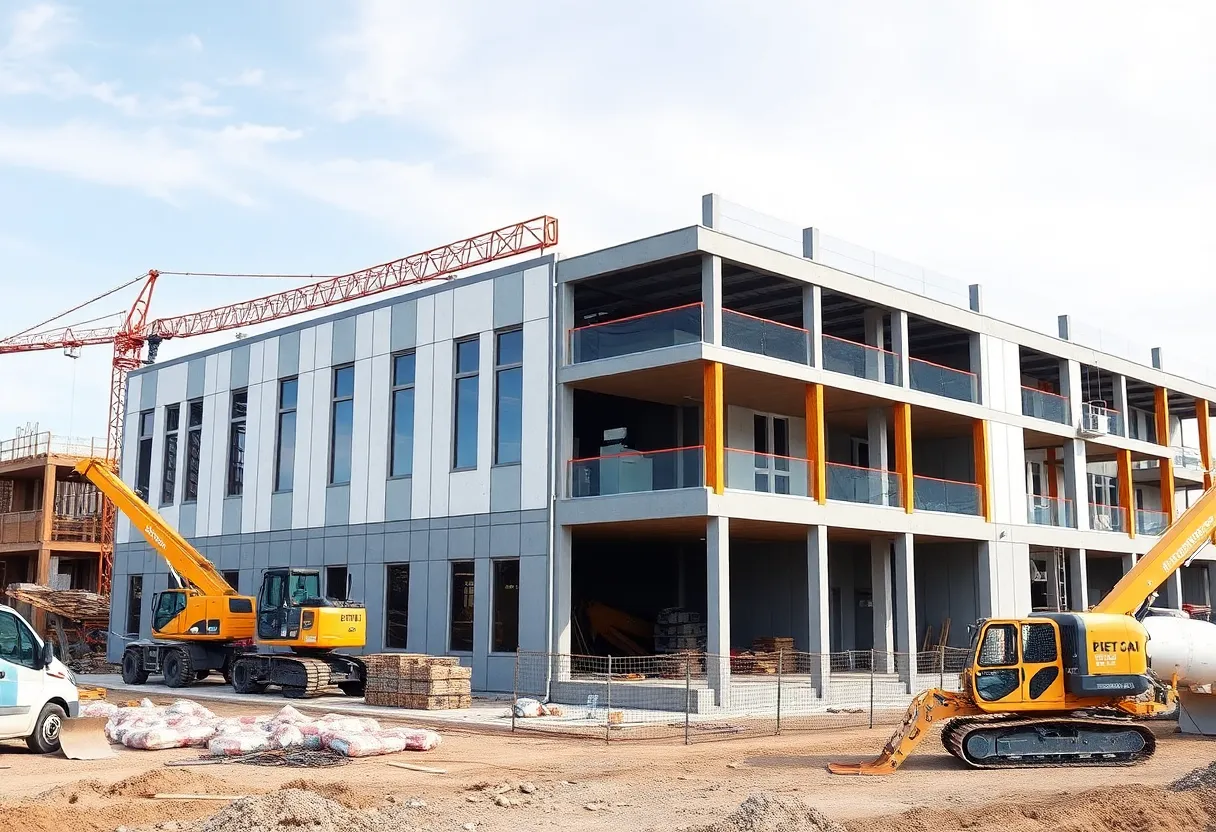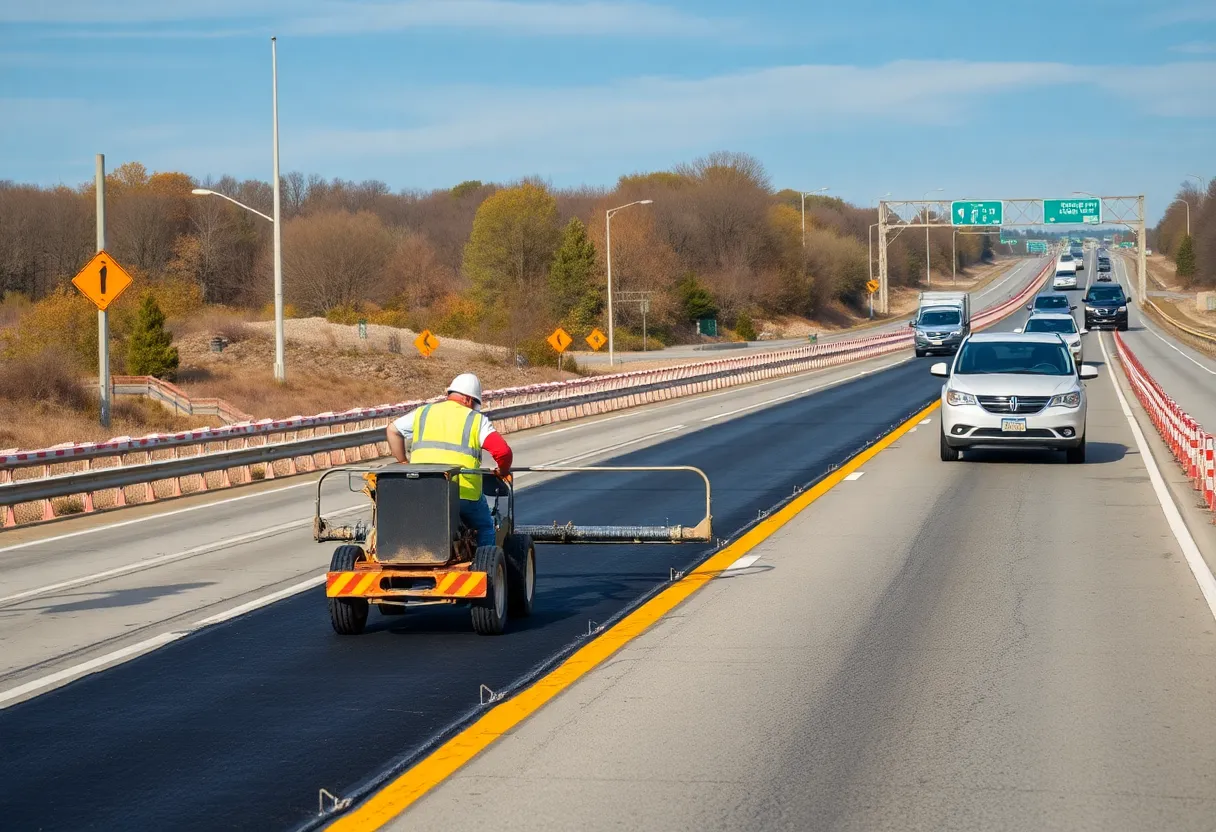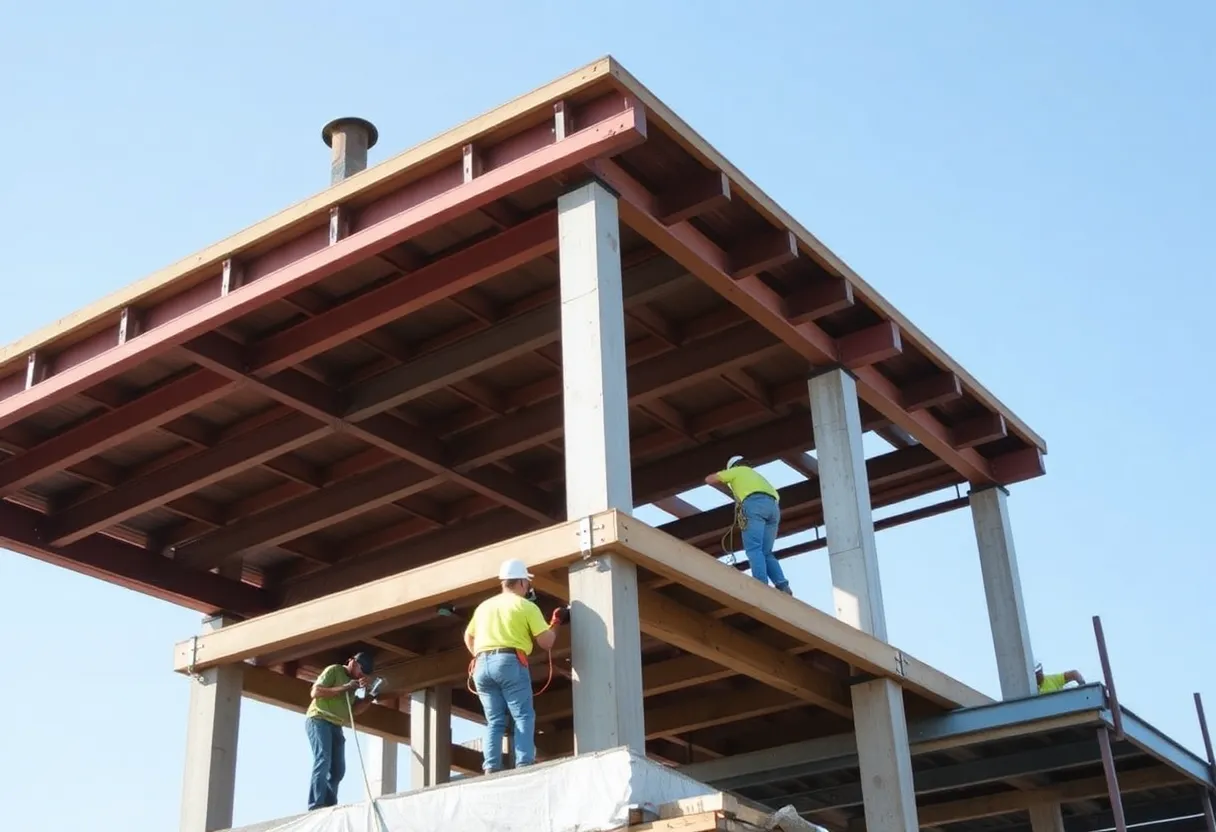News Summary
Comfort Systems USA has announced its expansion into modular construction techniques, aiming to modernize the construction sector. This strategy plans to lower costs and accelerate project timelines amid economic challenges. The company’s stock has seen a surge in investor interest following the announcement, highlighting confidence in this innovative shift. Experts suggest that modular construction can enhance efficiency by reducing on-site labor needs and minimizing material waste. The integration of AI in construction is expected to drive even greater efficiency, marking a pivotal moment for the industry.
Comfort Systems USA Expands into Modular Construction Amid Industry Challenges
Houston, Texas – On October 12, 2025, Comfort Systems USA, a leading provider of HVAC and mechanical services, received praise for announcing its expansion into modular construction techniques. This move is seen as a key step toward modernizing the construction sector, potentially lowering costs and accelerating project timelines in the face of ongoing industry downturns.
The company’s decision to adopt modular methods has sparked significant interest among investors, with its stock, ticker FIX, experiencing a surge in value. Analysts noted that this shift could transform how buildings are constructed by prefabricating components off-site, which reduces on-site labor needs and minimizes material waste. Such innovations are particularly timely as the U.S. construction sector grapples with economic pressures, including high interest rates that have slowed overall activity.
Supporting this development, experts highlighted that modular construction could lead to widespread efficiency gains. For instance, by building sections in controlled factory environments, projects might see reduced delays from weather or supply issues. This approach aligns with broader trends in the industry, where companies like Everus Construction Group have also seen valuation increases due to similar upgrades in their operations.
Further, the integration of artificial intelligence (AI) in construction is expected to enhance these benefits, driving even greater efficiency. However, this could initially raise prices for equipment and labor as new technologies are adopted. Additionally, PALFINGER’s recent opening of a new North American parts distribution center is viewed as a complementary effort to improve supply chain management, ensuring that materials reach sites more reliably.
Background on the U.S. construction landscape shows that high interest rates have contributed to a sector slowdown, making innovative practices like modular construction essential for recovery. Modular techniques involve creating building modules in factories and assembling them on-site, which not only cuts waste but also allows for better quality control. This praise for Comfort Systems USA underscores a potential shift toward more sustainable and efficient building methods across the nation.
As the industry evolves, these changes could help address longstanding challenges, fostering a more resilient construction environment. The focus on modular construction and AI integration represents a forward-looking strategy that might inspire other firms to follow suit, ultimately benefiting the broader economy.
In summary, Comfort Systems USA’s expansion highlights a pivotal moment for the U.S. construction sector, with potential long-term impacts on cost savings, speed, and sustainability.
Delving deeper, the praise from analysts emphasizes how modular construction could redefine standard practices. For years, the industry has faced issues like project delays and budget overruns, often due to on-site complications. By shifting to off-site fabrication, companies can streamline processes, potentially reducing overall project times by 20-50%, according to industry estimates. This is especially relevant in the current economic climate, where high interest rates have led to a noticeable decline in new starts.
The surge in investor interest for Comfort Systems USA’s stock reflects confidence in this strategy. Financial markets have reacted positively, viewing the expansion as a hedge against sector volatility. Similarly, Everus Construction Group’s recent valuation boosts stem from their own advancements, indicating a ripple effect across competitors. Experts predict that as AI tools become more prevalent, they will optimize everything from design to execution, though upfront costs for new equipment and training might temporarily offset gains.
PALFINGER’s new distribution center, focused on North American operations, adds another layer to this narrative by enhancing parts availability, which is crucial for maintaining momentum in modular projects. Together, these developments paint a picture of an industry adapting to modern demands, prioritizing efficiency and innovation to overcome economic hurdles.
Overall, the U.S. construction sector’s pivot toward these technologies could lead to a more competitive landscape, with firms like Comfort Systems USA at the forefront. This evolution not only addresses immediate challenges but also sets the stage for future growth, making it a noteworthy story in today’s economic context.
(Word count: 612)
Frequently Asked Questions
- Q1: What did Comfort Systems USA announce on October 12, 2025?
- A1: Comfort Systems USA received praise for its expansion into modular construction techniques.
- Q2: How might modular construction affect the industry?
- A2: Analysts highlighted how this shift could modernize the industry, potentially reducing costs and speeding up project timelines.
- Q3: What happened to Comfort Systems USA’s stock following the announcement?
- A3: The company’s stock, ticker FIX, saw investor interest surge following the announcement.
- Q4: What is modular construction?
- A4: Modular construction involves prefabricating building components off-site, which minimizes on-site labor and material waste.
- Q5: Why is this innovation important for the U.S. construction sector?
- A5: With the U.S. construction sector facing downturns due to high interest rates, such innovations are seen as transformative.
- Q6: What benefits has Everus Construction Group experienced?
- A6: Everus Construction Group also saw valuation boosts amid similar upgrades.
- Q7: What role does AI play in construction?
- A7: Experts predict that AI integration in construction will further drive efficiency, though it may increase prices for equipment and labor initially.
- Q8: What is PALFINGER’s recent development?
- A8: PALFINGER’s new North American parts distribution center is another step toward better supply chain management in the field.
Key Features Chart
| Feature | Description | Potential Impact |
|---|---|---|
| Modular Construction | Prefabricating building components off-site | Reduces costs and speeds up project timelines |
| AI Integration | Using artificial intelligence for efficiency | Drives further efficiency but may increase initial prices |
| Stock Surge (FIX) | Investor interest in Comfort Systems USA | Boosts company valuation amid industry downturns |
| Everus Upgrades |





